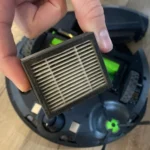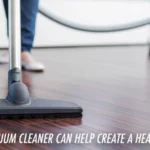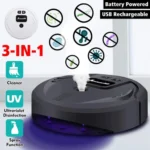Have you ever wondered how your smart vacuum cleaner manages to clean your house without you lifting a finger? One of the key components that make these appliances possible is the battery. But what happens when we overcharge the battery? It’s a question that not many of us ask, but the consequences of overcharging can be severe. In this article, we will delve into the world of smart vacuum cleaner batteries, how they work, and what happens when we overcharge them. We’ll also provide you with some tips on how to avoid overcharging to prolong the lifespan of your battery. So, let’s get started!
How Smart Vacuum Cleaner Batteries Work
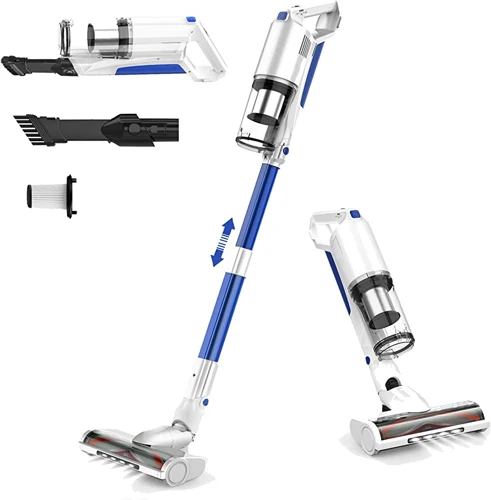
If you’re wondering how your smart vacuum cleaner battery works, you’re not alone. Despite being an essential component of your smart vacuum, many people are still unsure about the inner workings of these high-tech batteries. Understanding how your smart vacuum cleaner battery operates is crucial to ensuring its long-term health, efficiency, and performance. So, let’s take a closer look at what makes these batteries tick and how you can take care of them. For more tips on smart vacuum battery care, check out our Smart Vacuum Battery Care Guide.
Charging Process
When it comes to the charging process of a smart vacuum cleaner battery, it is important to understand the steps to avoid overcharging and prolong the battery’s lifespan. Here are the steps involved in charging a smart vacuum cleaner battery:
- Connect the charger: First, you need to connect the charger to a power source and the battery to start the charging process. Make sure to use the charger that comes with the vacuum cleaner or a compatible one to avoid damaging the battery.
- Monitor the charging progress: It is essential to keep an eye on the battery’s level and charging progress. Most smart vacuum cleaners come with an indicator that shows the battery level, and some may even have an app that provides information on the charging status. Check the manual to know when the battery is fully charged.
- Avoid overcharging: Overcharging a smart vacuum cleaner battery can lead to battery damage and shorten its lifespan. The battery should be disconnected from the charger after it has been fully charged. It is advisable to not leave a fully charged battery connected to the charger for an extended period, as this can cause damage.
By following these steps, you can ensure that your smart vacuum cleaner battery is charged properly and efficiently. For more tips on extending the battery life of your smart vacuum cleaner, check out our article on 10 Tips to Extend the Battery Life of your Smart Vacuum Cleaner.
How Lithium-Ion Batteries Work
Table:
| Component | Description |
| — | — |
| Anode | Negative electrode made of graphite or silicon-based material |
| Cathode | Positive electrode made of metal oxide |
| Electrolyte | Conductive material that helps lithium ions move between anode and cathode |
| Separator | Thin material that prevents direct contact between the anode and cathode |
Lithium-ion batteries are commonly used in smart vacuum cleaners due to their high energy density and low self-discharge rate. These batteries contain four primary components: the anode, cathode, electrolyte, and separator.
The anode is made of graphite or silicon-based material and is the negative electrode, while the cathode is made of a metal oxide and is the positive electrode. The electrolyte is a conductive material that enables lithium ions to move between the anode and cathode during charging and discharging. The separator, a thin material, prevents direct contact between the anode and cathode to prevent short-circuits.
During charging, electrons from an external charger are supplied to the anode while lithium ions move from the cathode to the anode through the electrolyte. The reverse occurs during discharging, where the anode gives up electrons, and lithium ions move back to the cathode.
It’s important to note that overcharging a lithium-ion battery can lead to detrimental effects such as battery degradation and swelling, which we’ll discuss further in the next section. To prevent this, the charging process should be carefully monitored and regulated.
What Happens When You Overcharge
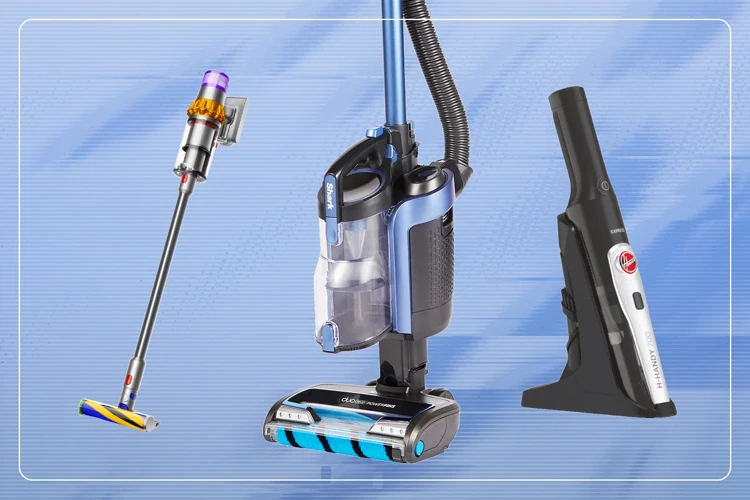
It’s important to understand the consequences of overcharging your smart vacuum cleaner battery. When you leave the battery plugged in for too long, it can lead to battery degradation and even battery swelling. These issues not only affect the performance of your smart vacuum, but they can also pose safety risks. To learn more about why overcharging is harmful and how to avoid it, continue reading this article on smart vacuum battery charging. Additionally, we’ll provide tips on smart vacuum battery saving, proper battery storage, and more.
Battery Degradation
One of the primary and most costly problems that can occur from overcharging your smart vacuum cleaner battery is battery degradation. Battery degradation is the gradual loss of battery capacity over time due to various factors such as overcharging, heat exposure, and other general wear and tear. Overcharging can speed up this process, leading to a shorter lifespan for your smart vacuum cleaner battery.
To understand why overcharging causes battery degradation, it’s important to know how a smart vacuum cleaner battery operates. Smart vacuum cleaner batteries are typically of the lithium-ion type, which use a delicate balance of chemicals and charges to store energy. During charging, a chemical reaction takes place between the positive and negative electrode materials, which causes the generation of ions. These ions are then stored in the electrolyte, which provides the ion conduction pathway for the lithium ions as they move between the positive and negative electrode materials. Overcharging can cause these electrodes to degrade more quickly, reducing the battery’s capacity and overall lifespan.
According to experts, overcharging a smart vacuum cleaner battery can cause it to degrade by as much as 20% in just a few weeks. This degradation occurs because the overcharging causes the battery to produce excess heat, which can damage the electrodes and electrolyte. Over time, the chemical reactions that occur during charging and discharging slowly erode the battery’s capacity, leading to a shorter lifespan.
To understand how much battery degradation affects your smart vacuum cleaner’s performance, it is important to know the overall capacity of the battery. Different brands and models of batteries have different capacity ratings measured in milliampere-hours (mAh). If the battery’s capacity degrades by 20%, this means that it’s maximum charge will be reduced by 20%, significantly reducing its runtime. For example, if your smart vacuum cleaner’s battery has a capacity of 2,000 mAh and it degrades by 20%, the maximum charge will be reduced by 400 mAh, reducing its runtime by several minutes.
| Battery Capacity | 20% Degradation | Effect on Runtime |
|---|---|---|
| 2,000 mAh | 1,600 mAh | Reduced by several minutes |
| 3,000 mAh | 2,400 mAh | Reduced by several minutes to an hour |
| 4,000 mAh | 3,200 mAh | Reduced by an hour or more |
If you want your smart vacuum cleaner battery to last as long as possible, avoid overcharging it. Overcharging can not only cause battery degradation but also battery swelling, which can permanently damage your device. Be sure to follow the manufacturer’s instructions and use a smart charger to avoid overcharging. If you suspect that your battery is already degraded beyond repair, it may be time to consider a smart vacuum cleaner battery replacement.
Battery Swelling
Battery swelling is another major issue that can occur due to overcharging of smart vacuum cleaner batteries. It happens when the lithium-ion cells inside the battery pack start to expand and bulge outwards. If left unchecked, the swollen battery can even burst open, which can be a serious safety hazard.
The reason behind battery swelling is the formation of gas inside the cells, typically caused by overcharging or overheating. The cells are designed to release excess gas during normal operation, but overcharging can cause them to produce more gas than they can release, leading to swelling.
Battery swelling not only poses a safety risk, but it also affects the performance and lifespan of the battery. A swollen battery will no longer fit correctly inside the vacuum cleaner, which can damage the battery contacts and prevent it from charging properly in the future. Additionally, a swollen battery loses capacity and can’t store as much energy as before, which reduces the runtime of the vacuum cleaner.
To avoid battery swelling, it’s essential to take care of the battery and follow the manufacturer’s instructions for charging and storage. Using a quality smart charger that stops charging once the battery is full can help prevent overcharging. It’s also important to avoid exposing the battery to extreme temperatures, which can cause it to overheat and swell.
If you notice any signs of battery swelling, such as a bulging or misshapen battery pack, stop using the battery immediately and contact the manufacturer for advice on how to dispose of it safely. Using a swollen battery can be dangerous and may cause damage to your vacuum cleaner or other property.
Battery swelling is a serious issue that can occur due to overcharging or overheating of smart vacuum cleaner batteries. It can pose a safety risk and affect the performance and lifespan of the battery. To avoid swelling, it’s essential to take proper care of the battery and follow the manufacturer’s instructions for charging and storage. Don’t forget to check out our top battery brands for smart vacuums guide as well as our pros and cons of spare batteries for smart vacuums for more information on how to take care of your battery.
How to Avoid Overcharging
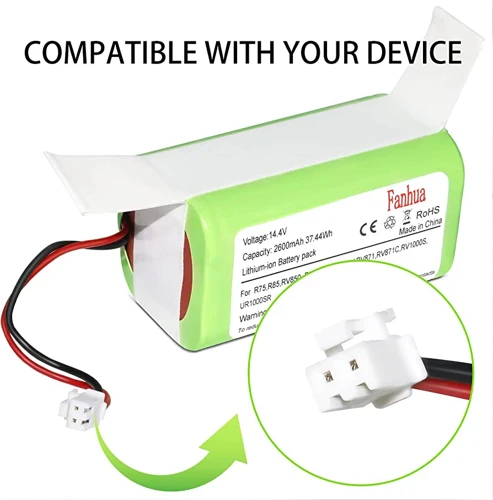
When it comes to taking care of your smart vacuum cleaner battery, avoiding overcharging is key. Overcharging can not only degrade the battery but also cause it to swell and potentially become a safety hazard. Fortunately, there are steps you can take to prevent overcharging and keep your battery running smoothly for longer. By following these tips, you’ll extend the life of your smart vacuum cleaner battery and ensure optimal performance. So, let’s dive into the ways you can avoid overcharging and take better care of your smart vacuum battery.
Read the Manual
To avoid overcharging your smart vacuum cleaner battery, the first step is to read the manual. The manual contains crucial information on how to charge, use, and maintain your smart vacuum cleaner battery properly. Each battery has specific charging instructions that you should follow to ensure optimal performance and avoid damage.
Here are some tips that you may find in your smart vacuum cleaner battery’s manual:
- Always use the charger that comes with your smart vacuum cleaner battery.
- Do not use a damaged or frayed charger cord,
- Do not charge the battery near a heat source or in direct sunlight.
- Charge the battery before it completely dies out.
- Remove the battery from the charging port after it reaches a full charge.
It’s important to read and understand all these instructions before you start using your smart vacuum cleaner battery. This will help you avoid overcharging and other potential battery problems that can be prevented with the proper care and maintenance.
So, take the time to read your smart vacuum cleaner battery manual, and make sure you follow the instructions closely. It’s a small step that can make a big difference in extending the life and performance of your battery.
For further tips on how to take care of your smart vacuum cleaner battery, continue reading the article or visit our page dedicated to smart vacuum cleaner batteries.
Use a Smart Charger
It is crucial to use a smart charger for your smart vacuum cleaner battery to avoid overcharging. Not all chargers are made equal, and using a cheap or inappropriate charger can cause significant damage to your battery.
Here are some reasons why you should use a smart charger:
- Regulates voltage: A smart charger regulates the voltage of your battery, ensuring that it charges at a safe and optimal rate. This feature helps prevent overcharging and extends the overall lifespan of your battery.
- Monitors battery temperature: The smart charger monitors the temperature of your battery and adjusts the charging process accordingly. This feature helps prevent battery swelling or overheating, which could lead to permanent damage to your battery.
- Optimizes charging speed: A smart charger can adjust the rate of charging to optimize the charging speed depending on the battery’s current state. This feature helps to maintain the health and efficiency of your smart vacuum cleaner battery.
- Prevents overcharging: A smart charger has an automatic shut-off feature that prevents overcharging. This feature helps you avoid damaging your battery by ensuring that the battery stops charging once it reaches its full capacity.
Using a smart charger is the best way to ensure that your smart vacuum cleaner battery is charged safely and efficiently. Investing in a quality charger will help you avoid costly repairs or replacements and extend the life of your battery.
Unplug After Fully Charged
It is crucial to disconnect your smart vacuum cleaner from the power source as soon as it is fully charged. Overcharging can negatively impact the battery life and performance in the long run. Here are some steps you can follow to ensure that you unplug your cleaner after it is fully charged:
- Set a timer: One of the easiest ways to ensure that you unplug your smart vacuum cleaner after it is fully charged is to set a timer. You can use a simple kitchen timer or a timer application on your smartphone. Once the timer goes off, you will know that it is time to unplug your cleaner.
- Use a smart plug: Another option to prevent overcharging is to use a smart plug or an outlet timer. These devices can be connected to your smart vacuum cleaner and programmed to turn off the power supply once the battery is fully charged. This way, you do not have to worry about overcharging or constantly monitoring the charging process.
- Check the battery indicator: Most smart vacuum cleaners come equipped with a battery indicator that shows the status of the battery. Keep an eye on this indicator while your cleaner is charging. Once it indicates that the battery is fully charged, unplug your cleaner immediately.
Following these steps can help you avoid overcharging your smart vacuum cleaner battery and extend its lifespan. Remember, taking care of your battery will ultimately save you money and ensure that your smart vacuum cleaner operates efficiently for years to come.
Other Tips to Save Your Smart Vacuum Cleaner Battery
Aside from avoiding overcharging, there are other measures you can take to extend the life of your smart vacuum cleaner’s battery. These additional tips can ensure that your device will function at its best for a longer time. From taking precautious steps to cleaning the battery terminals, these actions can make a significant difference in the long run. So, let’s dive into the various measures you can take to maintain your smart vacuum cleaner’s battery!
Clean the Battery Terminals
Maintaining clean battery terminals is vitally important when it comes to extending the lifespan of your smart vacuum cleaner battery. Dirty or corroded terminals can prevent your battery from charging properly or even cause it to overheat. Here are some tips for keeping your battery terminals clean and functioning optimally:
- Inspect the terminals: Before cleaning, inspect the terminals for any corrosion or build-up that might be present. If you find any, you will want to address this issue before cleaning.
- Use a soft-bristled brush: To clean the terminals, use a soft-bristled brush or an old toothbrush, which can be very effective for removing any debris. Be gentle but thorough, and use short, quick strokes. Make sure to get in between the terminal and the battery case, as this is where dirt and grime often accumulate.
- Vinegar solution: If you have stubborn corrosion on your terminals, try creating a solution of equal parts water and vinegar. Dip the brush into the solution and use it to gently scrub the terminals. Make sure to dry the terminals thoroughly when finished.
- Use rubbing alcohol: For a deeper cleaning, you can use rubbing alcohol instead of the vinegar solution. Apply a small amount of alcohol to a clean cloth and gently wipe the terminals. This will remove any remaining debris and sanitize the terminals at the same time.
- Check for damage: Finally, after cleaning, inspect the terminals again to check for any damage. If they appear to be worn or damaged, it may be time to replace your battery.
By incorporating these simple cleaning techniques into your maintenance routine, you can help extend the life of your smart vacuum cleaner battery, ensuring it is always ready to tackle your cleaning tasks when you need it.
Store the Battery at Room Temperature
When it comes to storing your smart vacuum cleaner battery, it’s important to keep it in a controlled environment. Ideally, you want to store the battery at room temperature, which is around 20-25 degrees Celsius. This ensures that the battery is not exposed to extreme temperatures, which can cause damage or degradation.
To help you achieve this, here are some tips for storing your smart vacuum cleaner battery:
- Keep the battery away from direct sunlight: Exposure to direct sunlight can cause the battery to overheat, which can lead to swelling or other damage.
- Avoid storing the battery in a cold environment: Extremely cold temperatures can cause the battery to lose its charge, which can contribute to its degradation.
- Store the battery in a dry place: Moisture can damage the battery, so it’s important to ensure that it’s stored in a dry place. You might consider storing it in a sealed plastic bag or container to protect it from moisture.
By following these tips, you can help ensure that your smart vacuum cleaner battery is stored safely and properly. This can help prevent damage and degradation, and extend the overall lifespan of your battery.
Avoid Deep Discharge
One of the tips to save your smart vacuum cleaner battery from damage is to avoid deep discharge. This means not letting the battery completely run out before recharging.
Why is deep discharge harmful?
When you deep discharge a lithium-ion battery, the voltage drops below a safe level, which can cause irreversible damage to the battery cells. It can also lead to reduced battery capacity and a shorter lifespan of the battery.
How to avoid deep discharge?
Here are some ways to avoid deep discharge and prolong the life of your smart vacuum cleaner battery:
- Charge the battery often: Instead of waiting for the battery to run out completely, try to recharge it when the battery level drops to around 20% to 30%. This will prevent deep discharge and ensure that the battery is always at a safe charge level.
- Set reminders: If you often forget to recharge your smart vacuum cleaner battery, set reminders on your phone or device to remind you when to charge it. This will ensure that you don’t let the battery completely run out, leading to deep discharge.
- Use auto-shutoff: Some smart vacuum cleaners come with an auto-shutoff feature that turns off the vacuum cleaner when the battery level drops to a certain level. This prevents the battery from deep discharging and reduces the risk of irreversible damage to the battery cells.
Remember, avoiding deep discharge is crucial for the longevity and optimal performance of your smart vacuum cleaner battery. By following the above tips, you can ensure that your battery stays healthy and lasts for a long time.
Conclusion
As we come to the end of this informative article on why overcharging your smart vacuum cleaner battery is harmful, it’s important to highlight the key takeaways that we’ve learned. We’ve seen that the charging process of lithium-ion batteries is complex and overcharging can lead to battery degradation and swelling. However, by following a few simple steps such as reading the manual, using a smart charger, and unplugging the battery after it’s fully charged, you can avoid overcharging and extend the life of your battery. Additionally, cleaning the battery terminals, storing the battery at room temperature, and avoiding deep discharge are all great tips to save your smart vacuum cleaner battery. Remember, taking care of your smart vacuum cleaner battery is essential to ensure it works well and lasts longer.
Take Care of Your Smart Vacuum Cleaner Battery
Your smart vacuum cleaner battery is a crucial component that needs proper care to ensure its longevity and optimal performance. Here are some tips to help you take care of your battery:
- Clean the Battery Terminals: Dirt and dust accumulation can clog the battery terminals and hinder the charging process. Make a habit of wiping the terminals with a clean and dry cloth to keep them free of debris.
- Store the Battery at Room Temperature: Avoid exposing the battery to extreme temperatures as this can affect its performance and lifespan. Ensure that you store the battery in a cool and dry place at room temperature away from direct sunlight.
- Avoid Deep Discharge: It’s not advisable to drain your battery completely, as this can lead to permanent damage. Lithium-ion batteries for smart vacuum cleaners should be charged frequently and often, even if not used heavily.
By following these simple tips, you can extend the lifespan of your smart vacuum cleaner battery and ensure that it operates optimally throughout its lifespan. Proactively maintaining your battery’s performance means longer charge cycles, and fewer periods of downtime, enhancing the overall usability and cost-effectiveness of your smart vacuum cleaner.
Frequently Asked Questions
1. Can overcharging my smart vacuum cleaner battery cause a fire?
While overcharging doesn’t often result in a fire, it can cause the battery to become unstable and potentially become a fire hazard in the future.
2. How often should I charge my smart vacuum cleaner battery?
It’s recommended to charge your smart vacuum cleaner battery after every use to keep it at optimal performance.
3. How can I tell when my smart vacuum cleaner battery is fully charged?
Most smart vacuums have a charging indicator light that will show when the battery is fully charged.
4. Can I use my smart vacuum cleaner while it’s charging?
It’s not recommended to use your smart vacuum cleaner while it’s charging as this can result in overcharging or other battery issues.
5. Should I let my smart vacuum cleaner battery completely discharge before charging it?
No, it’s not necessary to let your smart vacuum cleaner battery completely discharge before charging it. In fact, it’s recommended to charge it after every use.
6. How long does a smart vacuum cleaner battery typically last?
A typical smart vacuum cleaner battery can last anywhere from 2 to 5 years, depending on use and care.
7. Can I replace the battery in my smart vacuum cleaner?
Some smart vacuum cleaners allow for battery replacement, while others have built-in batteries that cannot be replaced. Be sure to check your user manual for specific instructions.
8. How long does it typically take to fully charge a smart vacuum cleaner battery?
The length of time it takes to fully charge a smart vacuum cleaner battery will vary depending on the model and brand. However, most batteries typically take anywhere from 2 to 4 hours to fully charge.
9. What should I do if my smart vacuum cleaner battery starts to swell?
If your smart vacuum cleaner battery starts to swell, stop using it immediately and contact the manufacturer for assistance. Swelling can indicate a serious battery issue and should be handled with care.
10. How can I extend the life of my smart vacuum cleaner battery?
To extend the life of your smart vacuum cleaner battery, be sure to follow the manufacturer’s recommended charging and usage guidelines, store it at room temperature, and avoid deep discharges.

